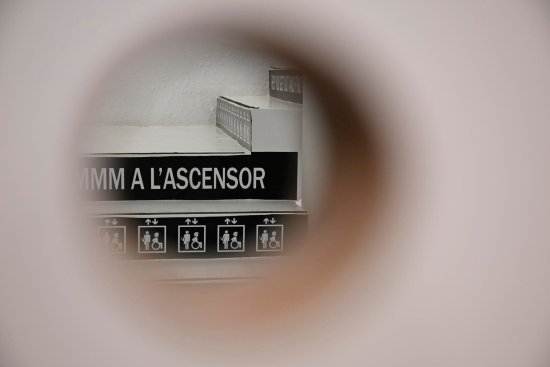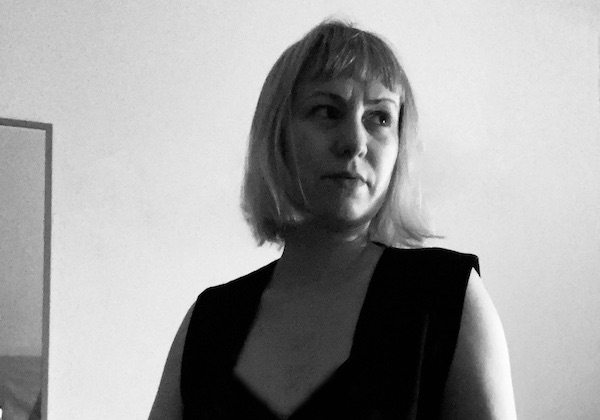Search
To search for an exact match, type the word or phrase you want in quotation marks.
A*DESK has been offering since 2002 contents about criticism and contemporary art. A*DESK has become consolidated thanks to all those who have believed in the project, all those who have followed us, debating, participating and collaborating. Many people have collaborated with A*DESK, and continue to do so. Their efforts, knowledge and belief in the project are what make it grow internationally. At A*DESK we have also generated work for over one hundred professionals in culture, from small collaborations with reviews and classes, to more prolonged and intense collaborations.
At A*DESK we believe in the need for free and universal access to culture and knowledge. We want to carry on being independent, remaining open to more ideas and opinions. If you believe in A*DESK, we need your backing to be able to continue. You can now participate in the project by supporting it. You can choose how much you want to contribute to the project.
You can decide how much you want to bring to the project.

A couple of months ago, while I was cleaning my house, I stopped for a moment to listen to a conversation on TV. It was one of those “informative” sections that are part of morning programs in which the presenter and guests comment on all kinds of news with emotional intensity. The commentators were visibly upset by video images captured on a store’s security camera of a person in a wheelchair that was to be seen stealing merchandise. What caught my attention was not the event itself but rather the tone of the conversation, a mixture of surprise, indignation and a kind of moral disillusionment.
According to the commentators, it was inappropriate for a disabled person to commit a crime. It was unheard of, they said, that a person in a wheelchair, usually associated with frailty or kindness, could act in such a way. What’s more, they were shocked that this person had taken advantage of the trust of the shop owner, who had assumed their innocence. The correct thing, according to them, was to assume that a disabled person is always a harmless person. Is this true? Well, no.
The exhibition Accident de Hac Vinent, formerly known as Helena Vinent, is dedicated to this person who stole while in a wheelchair, and to all the crips in this world, as diverse and complex as they may be. The exhibition, curated by Irina Mutt for the Miró Foundation in Barcelona, is a conceptual and physical challenge. Able-bodied people are banned from entering the exhibition, both metaphorically and materially. The artist made it clear from the beginning that this space was devoted to crip bodies, those who have been historically excluded from so many other places and experiences. In this way, Vinent tried to redress what Silvia Federici had stated about the marginalization of certain bodies within a capitalist economic logic that classifies, excludes and subjugates. Here, the subjects who are supposedly the most productive were the ones excluded.
To carry out this revenge, the entrance to the exhibition hall was blocked. The usual access to Espai13 involves descending a long staircase, but now when people arrived at the bottom they found a wall that prevented their entrance. The interior of the space could only be glimpsed through small holes in the wall, where the words Banda disca (crip gang) appears. Here Vinent refers to a hypothetical group that functions as a kind of terrorist collective formed by disabled people. This “gang” operates as a symbol of resistance and transgression, challenging the norms imposed by ableist society. The idea of this group not only provides a narrative component to the work but is also a call for the collective struggle of crips. In this way, Vinent’s work is positioned as a political statement to get disabled people to occupy spaces, to generate discomfort and to redefine reality. This sense of community is not alien to the work of this artist, as she often collaborates with people inside and outside the art world to carry out her projects.
But let’s return to the wall that disables the entrance, a gesture loaded with meaning that places us, even if only for a brief moment, in the same position of exclusion that many disabled people constantly face. I felt, perhaps even more strongly than this, another transformation, that of becoming a voyeur, looking through holes without really knowing what was happening on the other side of the wall but with the forbidden desire to know.
When I turned around on the stairs, I was told me that Vinent was waiting for me in the elevator, and there she was. I went down to the basement listening to her voice say to me: “We have a relationship.” I figured out then that her voice resonating inside the elevator, like a warm and intimate musical theme, was an invitation to reflect on the connections, visible or otherwise, that unite us with other bodies, other experiences, other realities. An interdependence that helps us slow down, one that does not incapacitate us but rather, as Judith Butler said, provides us with the only way to live fully.
When I reached the basement, I finally found an open door. However, a bright sign above it reminded me that my presence was not entirely welcome: “This space is not accessible to non-crip bodies.” It was a warning and, at the same time, an affirmation of the exhibition space as a place of resistance occupied by crips.
Once inside, I found myself surrounded by a series of sculptural installations made from shiny fabric held together by ropes and beads, reminiscent of BDSM imagery. These pieces represent fragmented bodies, crips, scarred and stitched back together, which remain in a precarious, constant balance. However, it is not their pain that reverberates through the space, but their softness and sensuality, inviting the viewer to lie down with them. The work’s eroticism reaches its peak when these pieces begin to move. Vibrators hidden beneath the surface activate at intervals a gentle swaying motion, generating a rhythmic and visual sound. The sound and repetitive movement, with the tinkling of the hanging ropes, create an atmosphere of orgiastic celebration of disabled bodies that are both the object and subject of pleasure.
In this way, the artist presents an intimate and powerful idea, one which not only dismantles the stereotypes surrounding disability but also questions the norms that regulate what is considered desirable, accessible and legitimate, in accordance with Paul B. Preciado’s theories of the body as a political space redefined by desire and dissent. The scene is completed with a couple of screens upon which Vinent once again uses words to speak to us face to face about the pleasure that we almost always find outside the norm, as if by accident.
Accident is ultimately a reminder that disabled people are neither angels nor martyrs, but rather complex individuals full of desires, emotions and contradictions. In a world that insists on classifying them as harmless and childish, Hac Vinent’s work resonates as a cry for freedom and autonomy, an invitation to stop looking down on crips and to begin to recognize them as what they are, that is, subjects capable of transgressing, loving and being.
[Photo credits: Accident by Hac Vinent. Part of the Espai 13 programme “We will keep each other company when it grows dark” curated by Irina Mutt © Fundació Joan Miró, Barcelona. Photograph by Roberto Ruiz].

Rosa A. Cruz is a Catalan-Andalusian art historian and cultural communicator. She has worked at the Museu d’Art Contemporani de Barcelona, at ADN Galeria and at the University of Barcelona, where she was part of the AGI Art, Globalization, Interculturality Research Group. She is particularly interested in questions about the double, psychology and biographical discourse. She is currently conducting research on the intersection between contemporary sexual and artistic practices.
"A desk is a dangerous place from which to watch the world" (John Le Carré)